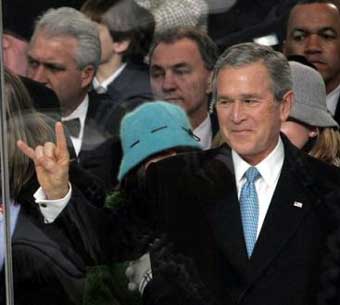Non-Verbal Communication
Learning Unit’s Contents
Non-Verbal Communication
If verbal communication is necessarily based on language, non-verbal communication is defined as the creation of oral and non-oral messages expressed by other than linguistic means.
Oral messages are created by our vocal articulation organs.
Linguistic messages do not need to be oral (any written text is a verbal and non-oral message).
1 – Nature of Non-Verbal Communication
1.1 No-verbal communication occurs constantly.
We are constantly producing non-verbal messages, consciously or unconsciously, intentionally or unintentionally.
1.2 Non-verbal communication has – in fact – a communicative value.
The intentional and non-intentional verbal cues give us loads of information to the receiver of these signals.
1.3 Non-verbal communication is primarily relational.
Verbal communication is not effective when it comes to express abstract or complex ideas.
On the other hand, non-verbal communication becomes especially important in interpersonal relationships or in social situations.
Therefore, we said that it is primarily relational.
1.4 Non-verbal communication is ambiguous.
Non-verbal communication is not easy to interpret – And it can be misleading.
If we see someone looking repeatedly at his watch, we may infer that he/she is nervous, but have no clue why.
1.5 Non-verbal communication is culture-bound.
The meaning non-verbal messages, of some gestures above all, varies from one culture to another.
2 – Verbal versus Non-Verbal Communication
2.1 Verbal communication is conscious; non-verbal communication is mostly unconscious.
Most of the non-verbal messages are not deliberate. We are not aware of sending those signals – whether we are nervous, embarrased, or bored – but they are evident for those observing us.
2.2 Verbal Messages have an order – a sequential order.
Since we are not aware of it, the number of non-verbal messages is overwhelming and chaotic.
2.3 Verbal messages have a Beginning and an End.
Non-verbal messages are continuous. It is impossible not to communicate non-verbally. It is a constant flow of messages.
3 – Functions of Non-Verbal Communication
3.1 Complementing
Completes, describes of accents a verbal message to emphasize our spoken word.
3.2 Repeating
Expresses a message identical to the verbal one,it repeats the message.
3.3 Regulating
Controls the flow of communication.
3.4Substituting
Uses nonverbal messages in place of verbal messages.
3.5 Deceiving
Nonverbal cues that purposely disguise or mislead to create a false impression or to convey incorrect information.
Types of Non-Verbal Comunication
We have almost an infinite number of ways to produce non-verbal messages. Of course, our body is the main generator of this kind of messages, but not the only one, as we will learn today.
1 – Kinesics
KINESICS is the generic name of the study of bodily movements. A significant part of the kinesics are the eye movement and the facial expressions.
Ekman and Friesen
differenciate 5 kinds of KINESIC BEHAVIOR:
Emblems:
body movements that take the place of words
Ex. To show the palm of the hand is the same that to say stop
Peace sign
Illustrators:
Illustrators are non-verbal symbols that reinforce the verbal message
Ex.: I don’t want to see you again – At the same time slamming the door
Affect displays:
Affect Displays are non-verbal signs of our emotional state.
Ex.: How you express fear, sadness, surprise, anger,…
(slouching, jumping up and down).
Regulators:
These are non-verbal cues used to regulate the communication between people.
Ex. To keep eye contact or to nod to someone who is speaking – is an encouragement to continue speaking.
Adaptors:
Non-verbal behavior we use to cope with uncomfortable communication situations.
Ex.: When you have a job-interview – and are waiting to be called, unconsciously, you tap your feet nervously on the floor
1.1 Oculesics.
Oculesics is the study of the eye behavior.
People spend 45% of their time in conversation maintaining eye contact, and this especial interaction greatly contribute to establish the characteristics of the relationship. Empirical research in non-verbal communication shows that eyes fulfill six communicative functions:
- persuasive, influence attitudes of others
- indicate degree of interest
- express emotions
- regulate interaction
indicate power or status - helps others form impressions
The eye behavior is also a reliable indicator of the degree of intimacy in the relationship.
1.2 Facial Expressions
The face, that Window of the Soul, as it has been called, is the most powerful tool to communicate emotions – or also to hide them. With our face, we might
intensify, neutralize, deintensify, and mask our feelings.
1.3 Body Movements
How we position your arms or legs can give information to the people around about your attitude toward them, or toward the situation. Stretching during a lecture is also a non-verbal cue – sometimes unconscious, sometimes conscious too – that can be interpreted.
Body movements reveal information, obviously, about you physical status (age, health, fitness), but also your psychological status (the way you walk can express happiness or depression).
1.4 Hand Gestures
The relevance of culture in non-verbal messages is especially clear when people communicate with their hands. The examples below may be obvious for you. And I am sure that you can think of more examples people use in traffic situations.



The meaning non-verbal messages, of some gestures above all, varies from one culture to another.
2 – Haptics
Haptics is the study of the different kinds of touches as a form of non verbal communication.
Touch can become the most intensive and intimate form of communication. And of course the reaction toward the touch is different from individual to individual and from one culture to another.
Touch basically fulfills following functions depending on the communicative situation and the nature of the relatioship:
functional – professional
social – polite
friendship – warmth
love – intimacy
sexual arousal
3 – Proxemics
This is the scientific name of the study of physical space in human interaction. Personal distance might carry meaning.
And again, the space-codices also vary from one culture to another.
Edward Hall (1969) identifies 4 distances:
- The intimate distance (from actual touching to 18 inches)
- The personal distance (from 18 inches to 4 feet)
- The social distance ( from 4 to 12 feet)
- The public distance (A distance exceeding 12 feet)
The concept of territory, the space we identify as our own space, is also part of the proxemics.
4 – Paralanguage
Paralanguage is the word communication researchers use when they talk about non-verbal, but oral cues that also carry meaning, i.e. signals that are produce with our articulation organs, but are nor linguistic signals.
According to Moss and Tubbs, paralanguage has two components:
- Voice qualities (pitch range, resonance, lip and articulation control).
- Vocalizations (noises without linguistic structure, like crying, laughing, or grunting).
Finally, they refer to unintentional communicative behaviors as DISFLUENCIES (for example stammering or using such sounds like “eh”, “um”, “er”).
